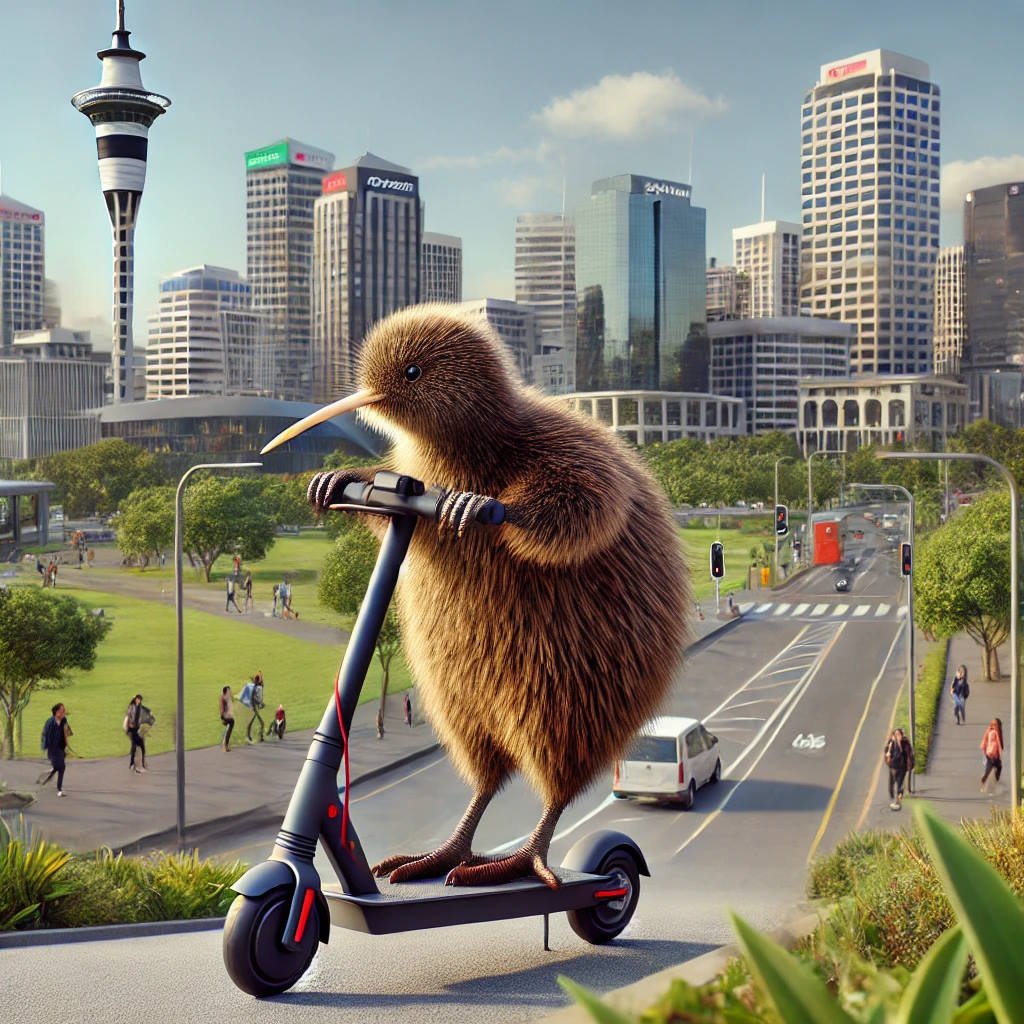Electric scooters have surged in popularity across New Zealand, providing a convenient and eco-friendly mode of transportation. However, as with any vehicle, there are specific rules and safety guidelines that riders must adhere to ensure their safety and the safety of others. This article covers the regulations for riding electric scooters on roads and footpaths, injury statistics, personal protective equipment (PPE) recommendations, licensing requirements, age limits, and other critical points.
Rules for Riding on Roads and Footpaths
Road Usage:
- General Roads: Electric scooters are allowed on most roads. Riders must adhere to the same rules as bicycles, which include riding as far to the left as practicable, using bike lanes where available (unless not permitted), and obeying all Road Code rules for motorbikes.
- Motorways: Electric scooters are strictly prohibited on motorways and expressways. These high-speed roads are unsuitable for the relatively low speeds of electric scooters and pose significant safety risks. With the availability of high-powered scooters, some people have ridden them on motorways, which is against the law.
Footpaths and Shared Paths:
- Footpaths: Electric scooters can be used on footpaths, but riders must travel at a safe speed and give way to pedestrians. The recommended speed on footpaths is generally no more than 15 km/h.
- Shared Paths: On shared paths, which accommodate both pedestrians and cyclists, scooter riders must also give way to pedestrians and ride at a safe and considerate speed.
Injury Rates and Safety
Electric scooters have been associated with a notable number of injuries. In New Zealand, data indicates a rising trend in hospital admissions due to scooter-related incidents. Common injuries include fractures, head injuries, and abrasions. The majority of these accidents occur due to loss of control, collisions with vehicles or pedestrians, and falls caused by road or path obstructions.
Personal Protective Equipment (PPE)
While New Zealand law does not mandate the use of helmets for electric scooter riders, it is strongly recommended. The following PPE can significantly enhance rider safety:
- Helmet: Wearing a helmet can drastically reduce the risk of head injuries in the event of a crash. A helmet is highly recommended for all riders.
- Gloves: Gloves protect the hands from abrasions and impacts. They also provide a better grip on the handlebars, improving control.
- Hi-Vis Vest: High-visibility vests make riders more noticeable to motorists and other road users, especially in low-light conditions, reducing the risk of accidents.
- Knee and Elbow Pads: These pads offer additional protection against falls and collisions, reducing the severity of injuries.
Licensing and Age Limits
No license is required to ride an electric scooter in New Zealand, making it accessible to a wide range of users. However, there are age-related guidelines to ensure rider safety:
- Minimum Age: The recommended minimum age for riding an electric scooter is 14 years. Younger riders are advised to use scooters under supervision and in safe, low-traffic environments.
- Adult Supervision: Children under the age of 14 should be supervised by an adult when riding an electric scooter, especially in areas with potential traffic hazards.
Riding with Passengers
Riding with passengers on an electric scooter is not permitted. Electric scooters are designed for single riders, and carrying additional passengers can significantly affect the scooter’s balance and control, increasing the risk of accidents.
Is it Safe to ride an E-scooter in New Zealand?
Riding an electric scooter in New Zealand offers a convenient and sustainable mode of transport, but it comes with responsibilities and risks. Adhering to the rules for riding on roads and footpaths, using recommended PPE, understanding the injury risks, and following age and passenger guidelines are essential steps in ensuring a safe and enjoyable riding experience. By following these guidelines, riders can help reduce the incidence of accidents and promote safer use of electric scooters in New Zealand.



